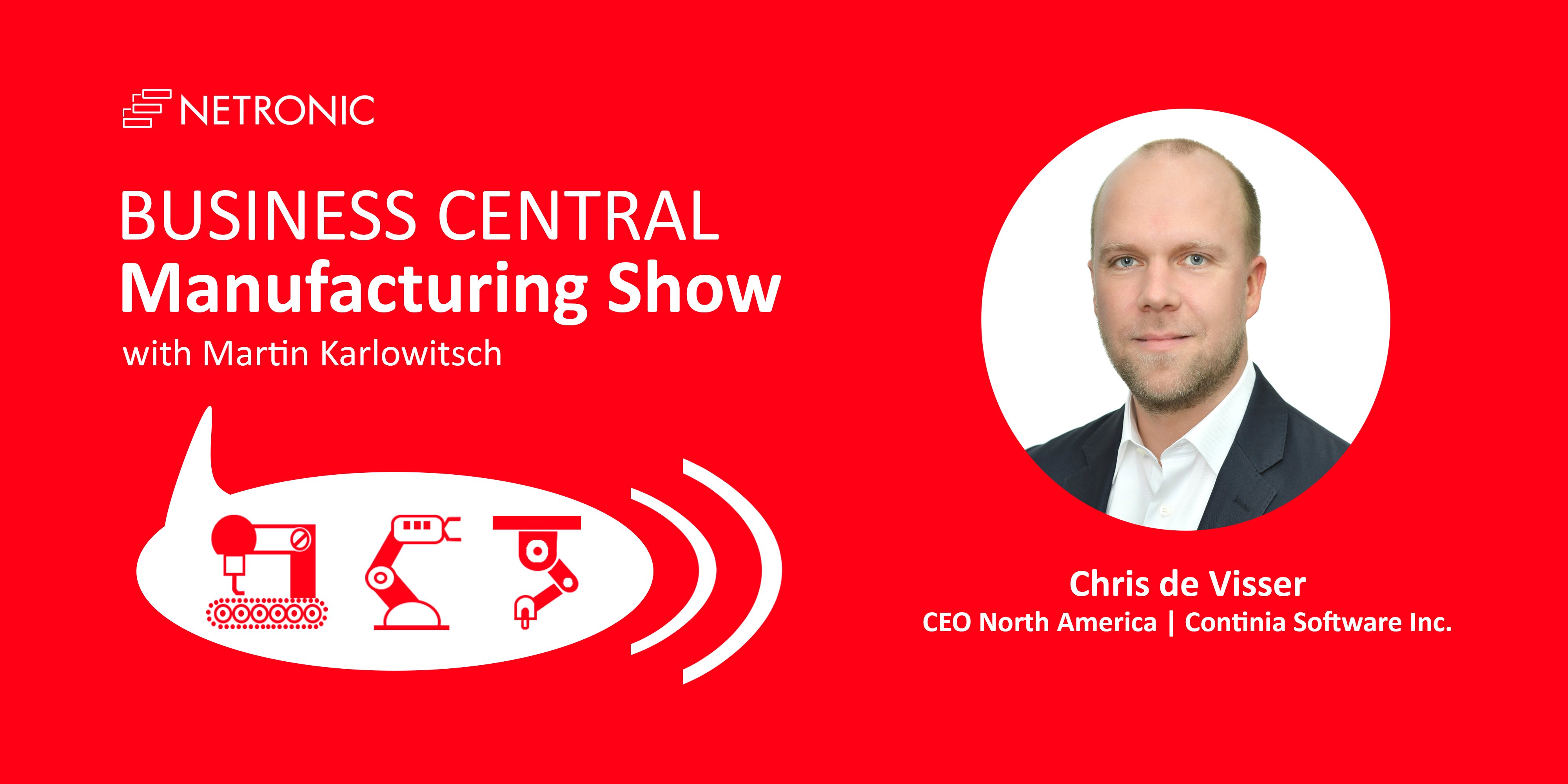I met with Chris de Visser for the 11th episode of the Business Central Manufacturing Show. Chris is from the Netherlands, but lives in New York and works as CEO North America for Continia. Before taking that role, he successfully ran the American business of Sana Commerce in Northern America. As such, Chris does not represent a partner being specialized in manufacturing with deep vertical know-how. Instead, he brings a lot of experience with horizontal topics such as sales and process efficiencies that are crucial for any company, and hence also for manufacturers. Hence, I took the opportunity to fly a full circle on back-office process efficiency, which includes administrative processes as well as sales and even marketing efficiency and effectiveness.
If you look for back-end processes that qualify for productivity improvements, then look for piles of paper. Almost every paper-based process - and there are typically a lot in any manufacturing back-office - is error-prone and can be automated, streamlined, and run smoother if digitized.
As a consequence, manufacturing companies should look at their internal processes (aka their administrative processes) in the same way than they look at their core production processes. They should just measure the throughput of these processes. This will reveal a lot of process improvement potentials to them. In that regard, Chris gave the compelling example of how long it can take to process an invoice of a supplier, which has 20 pages, which 20 lines on each page and every line refers to a different purchase order which includes multiple items which are needed in different areas in the shop.
Besides these standard back-office processes, also sales bear a lot of areas in which manufacturers can achieve process efficiency. Interestingly enough, Chris introduced eCommerce as a technology /tool that drives process efficiencies in sales as it makes processes less prone to errors.
Overall, constant change and ongoing process improvements - not just concerning the core manufacturing processes - should be a mantra for all manufacturing companies. Companies that took the jump to automate earlier seem to run better now, when COVID-19 is accelerating change.
It makes sense to re-read the last sentence again, as it bears a compelling provocation. Chris phrases it in a way (citing another podcast that he listens to) that COVID isn't changing anything; it is just accelerating change and hence exposes weaknesses in the established processes and systems of the past.
An example of an accelerated change is the need to shorten the supply chains, also coined at "next shoring". This could be achieved by decoupling the central product design and engineering from a "much-closer-to-the-customer" production (e.g. via 3D print), backed up by an automated system that enables manufacturers to fulfill quicker.
In that regard, this episode of the Business Central manufacturing show closes with a plausible pleading on the role that Business Central can play as the backbone of all these process efficiency initiatives.
You can tune in below 👇 on Apple Podcast, Spotify, Stitcher, TuneIn, or anywhere you get your podcasts.
On this episode, you'll learn:
- Why any paper-based process qualifies for process improvements and process automation.
- That throughput is a valid measure to identify process efficiency gain potentials also in administrative processes.
- That eCommerce is not only about broadening the sales channels, but also a lot about gaining process efficiencies.
- Why every good ERP strategy should embrace and foster an ongoing rethinking of the own processes.
- The vision of a new shortened supply chain (aka "next shoring"): decoupling of central product design and engineering from "close-to-the-customer" production (e.g. via 3D print), backed up by an automated system that enables manufacturers to fulfill quicker.
What to listen for:
- [03.08] Examples of typical paper-based admin processes that qualify for process efficiency gains.
- [03.53] How you can measure the length of an invoice processing process, and what this tells you.
- [06.08] Strong advice to all manufacturing companies to look at their internal (aka administrative processes) in the same way as they look at their core production processes.
- [07.43] Why (and how) manufacturing companies should look at eCommerce in terms of process improvement technology.
- [11.52] Typical mistakes that manufacturers should avoid when they bring together their ERP system with an eCommerce solution.
- [13.33] A provocative statement on COVID-19: did not change things, but just accelerated change that was happening anyway.
- [17.21] Why (and how) Marketing also is a process that could be driven more digital, and hence more efficient.
- [20.10] A plausible pleading why Business Central is the ideal platform to enable and drive full-circle process efficiencies for manufacturing companies
Links to love ❤️:
- The Business Central Manufacturing Show home
- Sign up for an upcoming webinar on visual scheduling for Microsoft Dynamics 365 Business Central
- Martin Karlowitsch on LinkedIn
- Chris de Visser on LinkedIn
- The Prof G Show (Chris' favorite podcast)
- Continia Software


